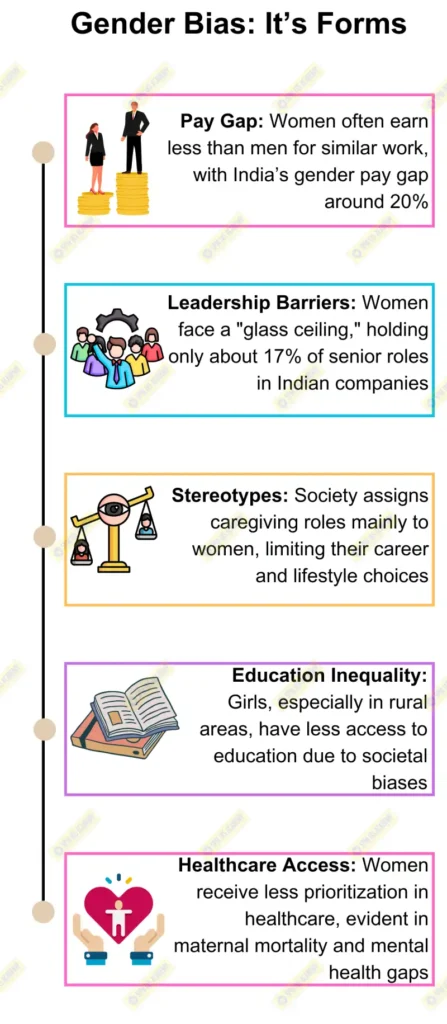To foster an equitable, unbiased environment in women’s organizations, the inclusion of male members can be strategically beneficial. Gender biases, both implicit and explicit, have historically influenced organizational structures, policies, and operational dynamics. Including men in women’s organizations could aid in normalizing gender-neutral advocacy and decision-making processes, advancing the cause of gender equality by engaging both sexes in mutual objectives. However, such inclusion must be implemented thoughtfully to ensure it enhances rather than detracts from the organization’s goals of empowering women.
Arguments in Favor of Including Male Members
A. Enhanced Awareness and Shared Responsibility
- Male members can help normalize discussions around gender equity, making it a shared social cause rather than an issue only for women. This can reduce stereotypes and broaden the base of support for gender-equitable policies.
- Initiatives like UN Women’s “HeForShe” campaign illustrate that male engagement in gender equality advocacy can challenge traditional biases and help men become allies in addressing gender discrimination.
B. Holistic Policy Development through Diverse Perspectives
- Men can bring diverse viewpoints that, when combined with women’s insights, may lead to more balanced and well-rounded policies. Mixed-gender policy teams are often better equipped to identify and counteract biases.
- For instance, the World Economic Forum’s Global Gender Gap Report (2023) indicates that diverse leadership teams tend to create more inclusive and effective policies, as they incorporate perspectives from both genders.
C. Increased Accountability and Reduced Gender Bias
- Having men on board can enhance transparency and accountability, as they may help ensure that organizational practices are scrutinized from multiple viewpoints, thus minimizing unintentional biases.
- In Kerala, for example, the inclusion of men in self-help groups (SHGs) aimed at empowering women has led to reduced resistance against women’s economic participation and created a supportive environment for women’s independence.
D. Overcoming Societal Resistance
- When men actively participate in women’s organizations, it can help to mitigate social resistance against gender equality initiatives. This normalization of male participation in women-centric causes aids in reducing backlash from traditional sections of society.
- The Men Engage Alliance, a global network that advocates gender equity with active male involvement, is a successful example of how male participation can reinforce positive societal change.
Arguments Against Including Male Members
A. Risk of Diluting Women’s Voices
- Including men in women’s organizations could risk diminishing women’s voices within their own platforms, where they are meant to lead and prioritize women’s perspectives and experiences.
- Research from UN Women suggests that women’s leadership spaces are vital for fostering confidence and independence, and male inclusion, if not carefully managed, may reduce the prominence of women’s leadership.
B. Potential Domination of Decision-Making
- There is a risk that men, due to social conditioning or institutional habits, may unintentionally dominate discussions or decision-making processes, shifting focus away from the organization’s primary objectives of women’s empowerment.
- Studies show that, often, when men are included, traditional power dynamics can influence organizational structures, potentially sidelining the very voices the organization aims to amplify.
C. Possibility of Bias Reinforcement Instead of Elimination
- Instead of alleviating gender bias, male inclusion might reinforce it if men are seen as “authorities” on issues that affect women directly, which can further entrench biases in the organization.
- Gender equality researcher Dr. Naila Kabeer argues that “spaces for women’s empowerment are critical for building solidarity among women,” and including men could undermine this solidarity if not implemented cautiously.
D. Shifting Focus from Women-centric Goals
- Men’s inclusion might inadvertently alter the focus of women’s organizations, especially if men’s perspectives on priorities or outcomes differ. This could divert attention from women’s empowerment to more generalized social issues, potentially weakening the organization’s impact on women’s rights.
- The 2022 World Bank report on gender equality notes that while collaborative governance is key for social development, women-focused groups need safeguards to maintain alignment with their core mission of empowerment.
Way Forward
To harness the benefits of male inclusion while safeguarding the core mission of women’s organizations, a balanced approach is essential:
- Structured Allyship Roles: Include men as “allies” or “support members” rather than in primary leadership roles, ensuring they contribute without overshadowing women’s voices.
- Gender Sensitization Programs: Implement training for all members, focusing on gender sensitivity and inclusivity to foster mutual respect and understanding of gender issues.
- Policy Safeguards: Establish policies that ensure equal representation in decision-making and prevent any one gender from dominating discussions. Rotational leadership and proportional representation can help maintain balance.
- Inclusive but Focused Goals: Regularly revisit the organization’s mission to ensure that male inclusion does not shift focus from core women-centric goals. Periodic evaluations can help adjust strategies to retain this alignment.
- Promoting Male-led Gender Advocacy Outside: Encourage male members to actively promote gender equality in broader society and workplaces, extending the influence of women’s organizations and normalizing allyship outside of organizational boundaries.
The inclusion of male members in women’s organizations presents both opportunities and challenges. While it can broaden support, enhance policy inclusivity, and reduce societal bias, it also risks diluting the organization’s women-centric goals. A balanced approach, where men are thoughtfully included as allies with specific safeguards, can enable women’s organizations to maintain focus on gender equity while fostering a more inclusive environment.












